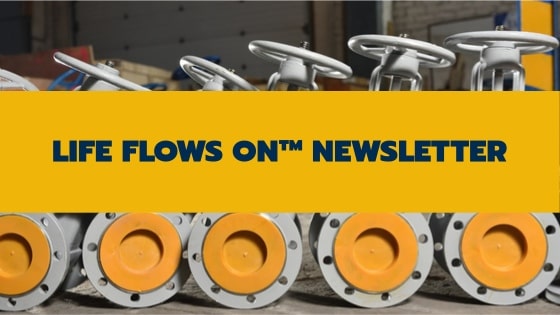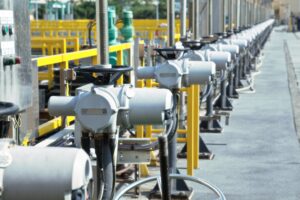
Pneumatic vs Electric Actuators: Which One is Best for Your Project?
Are you looking for the perfect actuators for your engineering project?
The consistent growth in the actuators market highlights the demand for new and advanced options. Industries like robotics, equipment, vehicles, and industrial automation cannot thrive without actuators.
Two types of actuators are favorites of these industries. They are the pneumatic actuators and electric actuators.
The question is, which of the two is the best one for your project? Continue reading below for an electric VS pneumatic actuators comparison.
How Do Electric Actuators Work?
An electric actuator is a mechanical device that converts electricity into kinetic energy. The conversion happens in a single linear or rotary motion.
It also automates a valve or damper to boost efficiency. It has an electric motor rotating while the rotor or spindle rotates. The spindle connects to a helical screw while revolving in a ball screw nut.
The rotary motion forces the nut to drive forwards and backward along the helical screw. A piston rod connects to the ball screw nut in a linear actuator. It creates linear motion while the motor rotates.
It also comes with an electric drive that controls the speed of the rotation. The motor’s power determines the torque that the actuator can generate.
Electric actuators come in different sizes and dimensions, depending on your requirements. The most common users include power plants, oil and gas plants, and food and beverage facilities.
The farming and agricultural sector also uses heavy duty electric actuators to run their machines. Some even connect the actuators to WiFi networks to boost organic farming. The same thing goes with wastewater treatment plants and paper manufacturers.
How Do Pneumatic Actuators Work?
Pneumatic actuators also serve different industries by generating power to create mechanical motion. The main difference between electric and pneumatic actuators is how they convert energy.
Pneumatic actuators use compressed to create mechanical motion. They come with vital parts like a cylinder, a piston, and several valves. They also generate energy into rotary or linear motion.
Air or gas enters a chamber where it builds up pressure. The pressure will eventually exceed a required level, contrasting the pressure outside. It results in the kinetic movement of the piston in a linear or circular motion.
Differences in Temperature Range
Pneumatic and electric actuators also differ in the temperature range. Pneumatic actuators can handle temperatures between -4 and 175°F with ease. They can go up to as much as -4 and 175°F using specialized bearings and seals.
You need to monitor the dew point during low-temperature applications. The dew point is the temperature where condensation starts in the air. Condensation may affect the air supply lines and reduce the air pressure.
Electric actuators work best between -4 and 175°F but may have condensation problems. They need to have proper sealing to prevent moisture buildup during outdoor use. They should also have a heater and thermostat to monitor temperature and condensation.
Head-to-Head Performance
You can compare the performance of the two actuators through the characteristics below. It ensures you pick the best one for your needs:
- Stalling
- Speed control
- Duty cycle
- Modulating
- Service
- Torque
Pneumatic actuators offer variable speed, while electric actuators are constant. The former is simple and cheaper but offers accuracy.
Pneumatic actuators are shock-proof, spark-proof, and explosion-proof. Electric actuators need NEMA enclosure modification for hazardous environments.
The durability of pneumatic actuators extends to their ability to manage heat. They will not overheat despite long hours of use. They also function in a wet environment.
It is the condensation inside the actuators that can affect performance. Meanwhile, electric actuators can overheat and require sealing from moisture.
The gap in the duty cycle or the on-time to an off-time ratio of the actuators is wide.
Pneumatic actuators have a 100% duty cycle, while electric actuators only have 25%. Pneumatic also offers a higher torque-to-weight ratio.
Lastly, pneumatic actuators come with a fail-safe option or spring-return feature. This option is generally unavailable for electric actuators.
The Cost Conundrum
Which of the two actuators is more affordable? Pneumatic actuators have lower upfront costs than electric actuators. However, things will shift once you consider the long-term impact.
Electric actuators become cheaper once you consider their operational costs. Pneumatic actuators have higher operating and maintenance costs.
You’ll be spending on air line installation and cylinder replacements. You also have to spend on electricity for the compressor.
Electric Actuator Pros and Cons
Electric actuators come with many advantages starting with flexibility in motion control. They offer accuracy and have high levels of repeatability that help boost productivity.
They also come with positioning features and velocity control. These two features let multiple actuators move in sync without compromising accuracy and precision. They also don’t need to stop despite intense acceleration.
For the cons, electric actuators suffer from the steep initial cost. They’re also not advisable for use in hazardous areas. You also need enough space to accommodate their large motors.
Pneumatic Actuator Pros and Cons
Simplicity and optimal pressure ratings are the biggest pros of pneumatic actuators. They can also survive rough environmental conditions and extreme temperatures. Their low upfront cost also makes them a sensible choice for small businesses.
For the cons, you must buy the current size of the Pneumatic actuator to fit your requirements. Consider proportionally sized regulators, valves, and compressors to ensure efficiency. The problem is costs can go up with all the upgrades.
Lastly, oil and lubrication can contaminate the air. In turn, the actuators may lead to downtime.
The Verdict
Weigh all factors when choosing the correct actuators for your project. Consider your requirements without going beyond your budget.
You can start with pneumatic actuators if you have a small project and budget. Electrical actuators are more suitable for long-term projects that rely on accuracy and repeatability.
Invest in Reliable Actuators Today!
Understanding the differences between pneumatic and electric actuators will help you weigh all the factors. You can determine the most vital ones to pick the device with the best value.
Check our lineup of high-quality actuators for different applications. Connect with us today and tell us more about your project. Invest in our reliable machine today.

